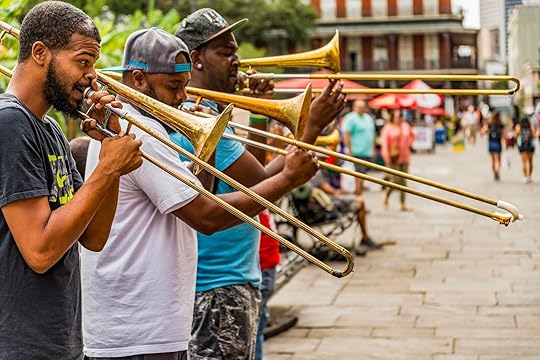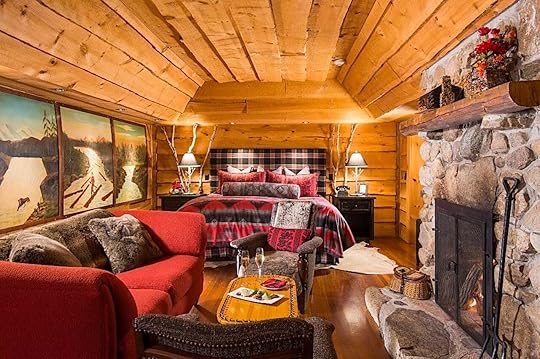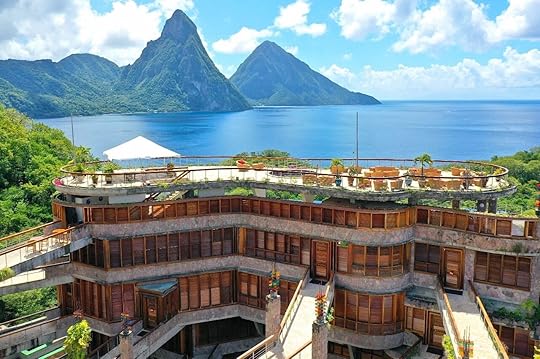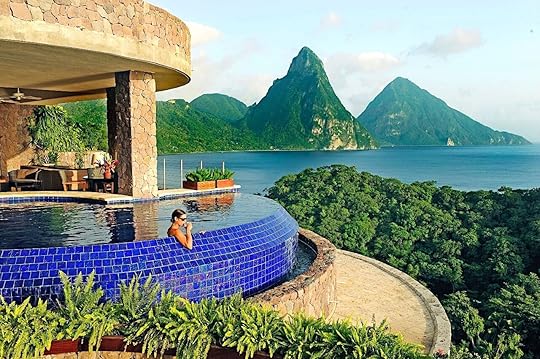Matador Network's Blog, page 538
January 25, 2022
Ireland dropped nearly all COVID-19 restrictions just in time for St. Patrick’s Day

One of the most COVID-19 conscious countries in the European Union has decided it’s made it to the other side of the Omicron wave. Ireland recently scheduled almost all of its long-running COVID-19 restrictions to expire beginning January 29. Reuters reports that the country had the second-highest incidence rate of COVID-19 in Europe last week, though Ireland also has one of the highest rate of citizens with booster shots. New cases peaked at just over 41,000 on January 11, but had significantly fallen to just 3,692 new cases by January 24.
“We have weathered the Omicron storm,” with the rate of infection reduced, booster shots increasing, and all key indicators “going in the right direction,” Ireland Prime Minister Micheál Martin said in a national address, as reported by Bloomberg. “I have stood here and spoken to you on some very dark days. But today is a good day.”
The restrictions that the Irish government has decided to drop include:
Bars and restaurants will no longer need to close at 8 PMBars and restaurants will no longer have to ask customers for proof of vaccinationsIndoor and outdoor venues are able to return to full capacity, just in time for February’s Six Nations rugby championship, and St. Patrick’s day celebrations in March.Unless things change between now and March 17, Dublin organizers are “full steam ahead” on planning the return of the massive St. Patrick’s Day national celebration, according to The Mirror. Pre-pandemic, the event lasted for days and could take more than a year to plan. This year, 13 bands have been booked and a parade planned so far.
The news from Ireland follows last week’s move from Britain, where Prime Minister Boris Johnson announced his plans to lift most of the UK’s COVID-19 restrictions, like the work from home guidance and vaccine passports, beginning January 26.
In Ireland, people are still required to wear masks on public transport and in shops until the end of February. Unvaccinated travelers have to show a negative test taken within 72 hours of arrival. 
Watch: Take a video tour of Drake’s unreal private jumbo jet

When Drake raps, “I fly private, so no one tells me to bring my seat up,” he means it in a big way. In 2019, the rapper received a free $185-million Boeing 767 from his longstanding partnership with the Canadian airline, Cargojet, and the plane is decked out in ways you can’t even imagine. The 23-year-old plane has had over $100 million worth of renovations and got a make-over in 2020 by the late fashion designer Virgil Abloh that makes it live up to its name: Air Drake.
View this post on InstagramA post shared by champagnepapi (@champagnepapi)
The exterior has a lot of nice touches. The sky blue with white clouds are reminiscent of his third studio album Nothing Was the Same. On the bottom, you’ll find a reference to his 2015 mixtape If You’re Reading This It’s Too Late, along with his fashion brand OVO’s logo on one side of the tail wing, and the prayer hands on the other that signify his self-appointed name “6 God.”
View this post on InstagramA post shared by Justin Catwell (@photosbyjustinc)
The TikTok from the account Global Charter goes over all the details via a video tour by DJ Akademics while the plane is in the air. Air Drake is nothing but luxury with room for 30. It has plenty of leather recliner seats, couches, and table seating in purple and white; matching carpeted floors and lamps; wide-screen TVs with projectors and sound systems; multiple private rooms including bedrooms, a living room, and an office — all enveloped in hardwood, gold accents, and plenty of mirrors.
@globalcharter Reply to @yinglongting Air Drake 🛩 #jet #plane #privatejet #privatejettiktok #privatejets #drake #airdrake ♬ POPSTAR (Instrumental) – DJB
And with plenty of lyrics about his time in places like Ibiza, Greece, and Dubai, there’s no doubt that the Certified Loverboy is putting the private plane to good use. 
This Indigenous woman brings tourists to her reservation to share the beauty, the sacred, and the truth of her land

When she was living over 1,000 miles away from home, Stacia Morfin yearned to not only return to the land on which she was raised but introduce others to its beauty, too.
Morfin, 37, grew up in the heart of Nimiipuu country in the small town of Lewiston, Idaho. During the spring of 2019, she launched Nez Perce Tourism, inviting visitors to experience whitewater rafting and jet-boat river cruises, Appaloosa horseback riding, hikes and sacred ceremonies at historical sites, pow wows, dinners and cultural workshops that include tipi building. The shortest tour is three hours and the longest is a total immersion lasting seven days.

Photo: Nez Perce Tourism
Another part of Morfin’s tourism business — and a must-stop — is Traditions Gift Shop in downtown Lewiston. Sharing space with an art gallery, a shop selling foraged teas, and a Hawaiian restaurant, the young Nimiipuu employed there sell earrings, moccasins and other items handmade by Nimmipuu artisans. Indigenous dances and music, often performed by Morfin’s father, siblings, and her other relatives at the gift shop, also provide a glimpse into the Nimiipuu culture even without stepping onto the reservation.
This interview has been edited for length and clarity.
Tell us about yourselfMy Indian name is Takes Care of Water, and my given name is Stacia Morfin. I grew up at lepwéyma (Lapwai) and šimiinekem (Lewiston). My mother grew up at tuniiweyme (Juliaetta) and my father at lepwéyma. I am a citizen of Nimiipuu nation whose ancestors originally came from pik’úunin (Snake River area between the Snake and Salmon River) and wawáwi, which is located on the lower-Snake River area above palúus, timíimap (up the Northfork of the Clearwater River), saqánma (Canyon people of the Snake River), and lamáta (White Bird Creek and Sam River Area).
Was there a moment or experience that inspired you to launch Nez Perce Tourism?In 2017, my daughter q’emesn’im l’aatis (camas lily or Kalila) and I hiked to the top of one of our sacred mountains that is also one of my people’s power places. As we sang one of our Nimiipuu songs, one of our elders appeared, offering a very direct set of instructions. That message was to start a cultural-tourism company to ensure traditional knowledge and places continue to be shared amongst our people, as well as to create a platform for our people to share their own narrative of the past, present, and future with outsiders.
The vision I experienced with our elder was a directive that had to be followed. I began listening to the needs of our community and conducted an internal needs analysis, as well as market research in the travel and tourism industry. Nez Perce Tourism is the only place in the world where you will hear the Nimiipuu side of history and witness stories of our ancestors. I see Nez Perce Tourism as an economic driver in Nimiipuu Country, and as a cultural and educational connection to ensure a bright future for generations. It is essential that children are included in all aspects of the business, from planning to implementation, for a deeper connection to our culture, land, and water. Nez Perce Tourism also provides one-on-one, elder-to-youth mentorship opportunities through interactive workshops.

Photo: Jennifer Rapoza / Nez Perce Tourism
Our company creates a safe space for Nimiipuu to be just that, Nimiiipuu. Not very long ago we were killed for being Nimiipuu—all of us were forbidden to speak our language, forced to cut our hair, given new names, forced into assimilation and onto reservations. Nez Perce Tourism is a driving force in combating systemic oppression my people still face today. Through our stories and legends, our narrative and the truth are told. Our people know who they are and can share parts of our history with others from a place of healing.
In what ways did you need to prepare your community for the increase in visitors?In the vision that came to me, my ancestor warned me: “There will be people that come against you, your own people, but do not take it personally. They are not coming against you but from distrust they have experienced from outside visitors in the past.” With this in mind, I did two years of market research. This included consulting an internal feasibility study that addressed the sacred versus the secret, along with commonly known and widely shared information in my community. This was a strategy to gauge community concern as well as set my goal: to preserve cultural identity and build a bridge for guests interested in authentic experiences.
Are there aspects of Nez Perce and Nimiipuu you are excited to show visitors?
Photo: Nez Perce Tourism
On the “Hear the Echoes of our Ancestors Jet Boat Tour” on the Clearwater and Snake Rivers, guests experience the places our ancestors called home and learn why our waters are sacred. We also take visitors to see the messages they left for us in 8,000-year-old petroglyphs along the rocks of Buffalo Eddy.
The Plateau peoples, specifically the Nimiipuu, are known for the vast connection to the land they originated from. A great thing happens when people are out on our waters, experiencing our landscape, tradition, and culture, and hearing our stories from our perspective. They are changed in their spirit. Now we, the Nimiipuu, can share our own story, with cultural integrity at the forefront.
Has anything surprised you about visitors’ responses to the tours?
Photo: Nez perce Tourism
Many visitors don’t have any true historical context of how long my people have truly been on this land. They are in awe of the open and pristine landscape, at the intricacy of our regalia, and the connection we have with our past. We share legends of our people and offer an accurate perception of damage caused by European settlement and history such as the acquisition of the Louisiana Purchase and Manifest Destiny leading to the brutal and mass murders of my people. Some guests are surprised we are still here at all.
How has COVID-19 affected Nez Perce Tourism in the past two years?In the midst of the coronavirus outbreak, while other tourism-related businesses closed their doors, we decided to operate at a limited capacity in the form of a gift shop with increased emphasis on shopping native, local, and online. During this difficult time, Traditions Gift Shop has brought back the trade-hub legacy of our people and created a streamline of income for local families. 
Visit New Orleans on a budget

The fun never stops in New Orleans, whether that’s because the drinks are always flowing or because it’s full of great things to see. No matter how you want to spend your time in the Big Easy, downing Hurricanes on Bourbon Street and throwing beads, or checking out historical attractions and beautiful architecture, all of that non-stop good time can add up very quickly. But worry not: If you know the right tricks, you can save hundreds of dollars on your trip — or use those savings to keep the fun going a little longer. Here’s how to enjoy New Orleans on a budget.
Free or cheap activities in New Orleans 1. Free: Visit Jean Lafitte National Historical Park and Preserves
Photo: Jaimie Tuchman/Shutterstock
The Jean Lafitte National Historical Park and Preserves is comprised of six sites, one of which are in New Orleans proper (the French Quarter Visitor Center) and are very easy to get to. The Chalmette Battlefield and the Barataria Preserve are only 15 and 30 minutes from Downtown New Orleans, while the other three (the Acadian Cultural Center, the Prairie Acadian Cultural Center, and the Wetland Acadian Cultural Center) are over one hour away. All of them are free to visit.
For an immersion into the fauna and flora of Louisiana, get yourself to the Barataria Preserve, a 26,000-acre area comprised of bayous, swamps, marshes, and forests. You’ll see wildflowers, alligators, birds, and more enchanting native creatures and plants. There are free guided walk on a boardwalk trail Wednesday through Sunday at 10:00 AM, or you can take a self-guided tour — just make sure to stay on the boardwalk or designated trail.
Where: Barataria Preserve, 6588 Barataria Blvd., Marrero, Louisiana 70072
2. Cheap: Take a tour of the NOLA Brewing Company and sample the goodsWant to support a company that helps the community and gives back in charitable donations to help the planet and the community? NOLA Brewing Company does just that and a little more. Have a beer and take a free tour to learn about the brewing process. Tours are Friday between 3 and 4 PM and Saturday between 2 and 4 PM. Show up early because they do not take reservations.
Where: 3001 Tchoupitoulas St., New Orleans, Louisiana 70115
3. Free: Visit St. Louis CathedralSt. Louis Cathedral is a beautiful landmark in Jackson Square. Since the eighteen century, New Orleans residents, and out-of-towners have admired the painted ceilings and stunning stained glass of this exceptional edifice. St. Louis Cathedral is open to the public from 9:00 AM until 4:00 PM, during which time you can walk around at your own pace for free, but we recommend that you buy the $1 brochure inside to get details on the artifacts and historical structures. When available, volunteer docents give impromptu tours to visitors. The daily mass is held at 12:05 PM and open to all.
Where: 615 Pere Antoine Alley, New Orleans, Louisiana 70116
4. Free: Attend a glassblowing demonstrationsWatch professionals in action turn a glass blob into a work of art and tour their workshops and galleries. Choose from New Orleans Glassworks & Printmaking Studio, or Rosetree Blown Glass Studio and Gallery. Please contact ahead and check the studio’s websites to find the hours for the daily glass blowing demonstrations.
where:
New Orleans Glassworks & Printmaking Studio, 727 Magazine Street, New Orleans, Louisiana 70130Rosetree Blown Glass Studio and Gallery, 446 Vallette St., New Orleans, Louisiana 701145. Free: Check out the vendor marketsThese markets contain local artists’ original crafts and retail options. Bring cash for better sales negotiation. Many vendors also accept credit/debit cards.
French Market District: It is six blocks of retail shopping from storefronts to vendor booths and lots of restaurants and eateries. There is food for purchase and samples of Louisiana favorites like alligator sausages, gumbo, various hot sauces, pralines, and jambalaya. The hours of operations are from 10 AM to 5 PM, daily.Where: 1008 N. Peters St., New Orleans, Louisiana, 70116
Harrison Avenue Marketplace: Local vendors sell their homemade crafts, artworks, and foods. There are live music and activities appropriate for all ages. It is held the second Wednesday of the month between the hours of 5:00 PM to 8:30 PM.Where: 801 Harrison Ave., New Orleans, Louisiana 70124
Secondline Arts and Antiques: Over 150 vendors selling eclectic furniture, sculptures, jewelry, costumes, and artwork. It is open daily, Sunday to Thursday nights from 5:30 PM to 12 AM, and Friday to Sunday during the day from 10 AM to 5 PM.Where: 1209 Decatur St., New Orleans, Louisiana 70116
6. Free/cheap: Visit a historical cemetery
Photo: amadeustx/Shutterstock
Visit the resting places of local legends, New Orleans voodoo priests, and other historical luminaries. Many of the tombs (all above ground because of the flooding risks) provide historical details and stories about their residents. Enter for free and walk around the impressive tombstones at Saint Patrick Cemetery No. 2, Lafayette Cemetery No. 1 , and Saint Louis Cemetery No. 3. To tour the very popular Saint Louis Cemetery No. 1, it is mandatory to have a licensed tour guide with you — and it is well worth the trip. Tours are offered Monday through Saturday at 10 AM, 11:30 AM, and 1 PM, and Sunday at 10 AM. Admission is $20.
where:
Saint Patrick Cemetery No. 2, 5000 Canal St., New Orleans, Louisiana 70119Lafayette Cemetery No. 1, 1400 Washington Ave., New Orleans, Louisiana 70130Saint Louis Cemetery No. 3, 3421 Esplanade Ave., New Orleans, Louisiana 70119Saint Louis Cemetery No. 1, Basin at St. Louis St., New Orleans, Louisiana 701127. Free: Discover Saint Charles AvenueSaint Charles Avenue is known for its oak trees and 19th-century grand mansions. Many of the mansions are converted into Bed and Breakfasts and the hosts are happy to share the history of their homes to those who stay there. The avenue is perfect for walking or biking to restaurants, historical churches, hotels, boutiques, Audubon Park, Loyola University, and Tulane University. When you need to rest, hop on the historic streetcar that runs along the avenue.
8. Free/cheap: Experience City ParkCity Park is a 1,300-acre self-supporting public park and it is one of the biggest and oldest parks in the country. Dating back to the 1850s, its beautiful landscape includes 600-plus-year-old oak trees, ponds, and more. Stop by the New Orleans Botanical Gardens to see over 2,000 plants from around the world ($10); get a treat at the City Park snoball stand for a couple of dollars; and visit the New Orleans Museum of Art ($15). Visitors will need one or two days to enjoy everything in the park. Although concessions accept debit/credit, we recommend bringing cash to purchase from the vendors. Comfortable walking shoes are a must for the various terrains.
Where: 1 Palm Drive, New Orleans, Louisiana 70124
9. Free: Admire the street performers on Jackson Square
Photo: Enrico Della Pietra/Shutterstock
In front of St. Louis Cathedral and across from the iconic Café Du Monde, is Jackson Square. It is home to artists showcasing their talents from artworks to music and is a never-ending stream of live entertainment.
Where: 701 Decatur St., New Orleans, Louisiana 70116
10. Free: Enjoy live music on Frenchmen StreetFrenchmen street is full of live music performances in the bars, clubs, and lounges. The best places to check out are The Spotted Cat, Apple Barrel, and they do not have a cover fee. If the venues are full, the sounds can be enjoyed from the street.
Where:
The Spotted Cat, 623 Frenchmen St., New Orleans, Louisiana 70116Apple Barrel, 609 Frenchmen St., New Orleans, Louisiana 7011611. Free: Take a private tour of Antoine’s RestaurantAntoine’s is a French-Creole restaurant opened in 1840. This fine dining restaurant has 14 dining rooms, each with its decor own story to tell. We recommend asking the waiter for a guided tour of the restaurant during slower hours. Don’t fight the urge to dine.
Where: 713 St Louis St., New Orleans, Louisiana 70130
12. Free: Spend a day in Audubon Park
Photo: Fotoluminate LLC/Shutterstock
Located in the historic Uptown neighborhood of New Orleans, Audubon Park is accessible by Magazine Street and Saint Charles Avenue public transportation. It’s a great place to spend a sunny day outdoors away from the urban environment. The park has a 1.8-mile jogging path, a golf course, picnic areas, a lagoon, tennis courts, a pool, and more.
Where: 6500 Magazine St., New Orleans, Louisiana 70118
13. Free: Visit Faulkner House BooksNot only does this French Quarter bookstore carry author William Faulkner’s collection, it also used to be his residence. Faulkner House Books is almost hidden in Jackson Square alley, and carries fine literature, selected signed hardback editions, and rare editions.
Where: 624 Pirate’s Alley, New Orleans, Louisiana 70116
14. Free: Experience Louis Armstrong ParkLouis Armstrong Park, also known as Congo Square, is a 31-acre park in the Tremé neighborhood. This historic site is where the slave population gathered on Sunday to sing, dance, and trade. Take the time to read the informative plaques along its river walk. We recommend that you visit in the daytime unless you are attending a special evening event. If in New Orleans during the week, check out Jazz in the Park, a free event, on Thursday evenings.
Where: 835 N. Rampart St., New Orleans, Louisiana 70116
15. Free: Watch the sunset at The FlyThis is the locals’ favorite spot to watch the sunset over the Mississippi River. The Fly is a park located along the waterfront behind the Audubon Zoo. On the weekends, it’s a popular place for barbecues and pickup games at the numerous fields. Sitting can be limited, so bring a blanket and a chair. It is a great location for a relaxing picnic, to read a book, and marvel at the big world.
Where: Exposition Dr., New Orleans, Louisiana 70118
16. Free: Attend festivalsLouisiana has more festivals than days of the year, and on most weekends you’ll have more than one festival to choose from. Many festivals have free admission and offer a chance to sample food and drink from dozens of local restaurants at pretty fair prices. French Quarter Fest is the crown jewel of free festivals, but Satchmo Summerfest, Poboy Fest and an ever-growing list of food-specific festivals (Fried Chicken, Oyster, Creole Tomato, Beignet) are all worth your time.
17. Free: Window shoppingThere are shopping options in New Orleans other than Canal Street and the mass production souvenir shops.
Located near the French Quarter, Royal Street is known for antiques and art galleries. Don’t forget to ask for a guided tour and viewing of sword-canes at M.S. Rau Antiques.Locally known as Gallery Row, Julia Street is the place for fine and expensive art. Try participating in the First Saturday Gallery Openings for free every first Saturday of the month.Parallel to St Charles Ave, Ortha Castle Haley Boulevard is known for culturally diverse arts and crafts from local artists.Freret Street has high-quality merchandise from art galleries, upscale boutiques, and other specialty shops.Located between Poydras Street and Lafayette Street, Fulton Street has a pedestrian-only outdoor mall.Between Loyola and Tulane universities, Maple Street is known for consignment shops, affordable boutiques, and bookstores.Near the French Quarter, Chartres Street is known for art galleries, antiques, and boutiques.Tips to save money in New Orleans 1. Drinking on the streets is legal — bring a roadie when you’re going outDrinks in New Orleans are not especially expensive, but even $2 beers can add up when you’re drinking enough of them. It is perfectly legal to drink on the streets in New Orleans and the Go-Cup is a way of life (just no glass please). So fill in your cup with your beverage of choice at your accommodation and enjoy the sights of the city with a mild buzz.
2. Use public transportation
Photo: f11photo/Shutterstock
If you didn’t come with a car, don’t rent one. Parking rates downtown can be astronomical and public transportation is widely available. While buses offer more coverage, don’t miss a ride on the streetcar, which is an experience unto itself. Purchase a Jazzy Pass from your driver when you board and ride for $3 all day.
3. Stay in an Airbnb close to the actionThere are plenty of amazing Airbnb in New Orleans that will help you save money on accommodation — especially if there is a group of you. Check out the best Airbnbs for Mardi Gras and near the French Quarter. 
A version of this article was previously published on August 4, 2017, and was updated on January 25, 2022, with more information.
More like this Dessert7 best places to binge on beignets in New OrleansHumiliate yourself at Mardi Gras

Mardi Gras 2022 is kicking off next month with celebrations and parades in New Orleans. If you have plans on joining the party this year or hope to in the future, there are some things you must know before you go. In order to enjoy yourself, respect traditions and respect New Orleans and its residents, we’ve put together a guide on our tips for Mardi Gras 2022. Here are some of the things you need to avoid unless you want to humiliate yourself at Mardi Gras.
1. Bring glass to the parade route.You can drink on the street to your heart’s content during the Carnival season (and really all year), but leave the glass at home. You’re drunk, it’s dangerous, and it will get you thrown off the parade route if a cop gives you a warning and you don’t get rid of that glass beer bottle immediately.
2. Pile your stuff on top of the streetcar tracks.Most parades take place on the Uptown Route, which runs along St. Charles Avenue. The street will close and the streetcars will stop running along the neutral ground about two hours before the parade starts, but before that it’s business as usual. Don’t be the idiot that sets up for a day-long tailgate only to have to frantically move his tent ten minutes later when the streetcar driver is plowing through at full speed.
3. Leave your car parked on the parade route.Park your car with caution during Mardi Gras 2022 parades. Look for signs (and if you find a really great parking spot — really look for signs) warning you about tow-away zones. The parade before the parade is the fleet of tow trucks hauling off dozens of illegally parked cars.
4. Buy Mardi Gras beads.There is nothing you can do in New Orleans that will elicit eye rolls as quickly as shelling out $20 for a pair of beads that people literally throw to you for free all day and night for the next two weeks.
5. Expose yourself for Mardi Gras beads.Really want to humiliate yourself? Stand in the middle of a crowded street and whip out your boobs (or worse) for the cheapest pair of beads some bachelor party could find. Even worse, do it for locals who are actively tormenting and making fun of you by standing on a balcony dangling a 10 cent piece of plastic at crowds of idiot tourists below. Want to get arrested? Do it anywhere other than Bourbon Street.
6. Get wasted on the first night.Carnival is a weeks-long season culminating with two weeks of parades leading up to the big day. If you show up Wednesday night for Nyx and get blackout drunk, or start vomiting at 11:00 AM on Thoth Sunday, hours before Bacchus has even begun lining up, you’re missing the point entirely. Mardi Gras is a marathon, not a sprint. Learn to day-drink before you even book your flight.
7. Urinate in public.There are port-o-potties everywhere. The city places hundreds up and down parade routes in the days leading up to parades, and bars, churches, businesses, and enterprising homeowners have (cleaner) pay bathrooms. Do not pee in someone’s yard.
8. Fight with kids for throws.Contrary to popular opinion, Mardi Gras is largely a family affair. People bring their babies and their grandmas and everyone in between, and if there is a child in your midst they are getting 90% of the throws. Do not, I repeat, DO NOT, fight with a child or anyone for a throw…The crowd will turn on you and chances are pretty good a cop will throw you off the route.
9. Forget your manners.There is a complicated and controversial set of written and unwritten rules when it comes to attending Mardi Gras parades, particularly those held on the Uptown Route. Generations of families come to the same parades and stand in the same spots. They will arrive early (sometimes days early) and stake out their place with ladders and ropes and tents, none of which are technically allowed on the route. Do not push through them or move their stuff. Do not eat the king cake or drink the beer they have left unattended. Do not waltz in to “their corner” like you own the place. If you cannot find an unguarded spot, accept it and watch from the back (the krewe members have good arms) or be nice and make friends and chances are you will be invited to share in their space and their spoils. 
10 of the best adult-only all inclusive resorts in the Americas

We get it. People love their children and don’t mind other people’s little darlings, either. But if it’s serious R&R you’re after, a pool full of screaming kids and the thumping bass of an endless pool party isn’t going to help your cause. If you’re looking for an opportunity to truly — and we mean truly — wind down, look no further than these top all inclusive adults only resorts that place a heavy emphasis on relaxation.
Each of the following picks has its own distinct atmosphere and vibe — from the secluded and luxurious, to the indulgently hedonistic: think easy-breezy sun and sand spots, tranquil forest getaways, foodie-approved gourmet havens, and more. But the one thing they do all have in common? Their efforts to create an oasis of calm where everyone can fully embrace the joys of adulthood. No crying babies interrupting your hangover, no asking for the kids’ menu, no teens running feral. Just pure unadulterated relaxation. Heaven.
So whether you’re taking a little break from your own kids, or you just want to avoid other people’s sprogs where humanly possible, here are some of the best all inclusive adults only resorts to try out for size.
We hope you love the all inclusive adults only resorts we recommend! Just so you know, Matador may collect a small commission from the links on this page if you decide to book a stay. Listed prices are accurate as of the time of publication. See our full Advertiser Disclosure here.
All inclusive adults only resorts in MexicoAll inclusive adults only resorts in the USAll inclusive adults only resorts in the CaribbeanAll inclusive adults only resorts in Mexico1. Marquis Los Cabos, Mexico
Photo: Marquis Los Cabos

Photo: Marquis Los Cabos

Photo: Marquis Los Cabos

Photo: Marquis Los Cabos
Arguably the best adult only all inclusive resort in Mexico and hidden on a stretch of unspoiled coastline between San Jose del Cabo and Cabo San Lucas, Marquis Los Cabos is surrounded by majestic mountains and bright turquoise waters. The chic property features 26 casitas equipped with ultra-deep jetted tubs, Mexican artwork, and spacious private balconies for soaking up the rays. Oh, and they all come with sea views, so that’s unadulterated sunsets on tap (minus rowdy spring-breakers playing frisbee).
The resort has a glittering central pool, plus two infinity numbers, all surrounded by five gourmet restaurants bursting with local and international flavors to sample. Winding things down even further is easy thanks to the resort’s 13,000 square-foot spa, which includes an array of treatment options for upping the relaxation: think indulgent body wraps, soothing massages, and facials enriched with diamond extract.
2. Hotel Xcaret, Mexico
Photo: Hotel Xcaret

Photo: Hotel Xcaret

Photo: Hotel Xcaret

Photo: Hotel Xcaret
Since all-inclusives along the Riviera Maya have a reputation for boozy pool parties, it may come as a bit of a surprise to find this hidden oasis slap bang in the middle of it all. Not only is this adults-only spot seriously serene: it’s also the first hotel in the Americas to win an EarthCheck certification for its sustainability — so you can kick back and relax from an ethical standpoint as well.
A great place to get away from the hustle and bustle of hectic daily life, Hotel Xcaret is set in 30 acres of lush tropical gardens. Enjoy two outdoor swimming pools, or unwind with a spa treatment at their world-class wellness complex.
All inclusive adults only resorts in the US3. Triple Creek Ranch, Montana, US
Photo: Triple Creek Ranch

Photo: Triple Creek Ranch

Photo: Triple Creek Ranch

Photo: Triple Creek Ranch
Located on 10,000 acres of wilderness in southwest Montana, Triple Creek Ranch has everything you need to feel as if you’ve been whisked off to another world: oversized bedrooms with wood-burning fireplaces; plush robes and slippers; and cozy lounging areas where you can curl up with a book. It’s like having your own private lodge that boasts all the comforts of home.
The owners have gone to some pretty extreme lengths to ensure that guests have an array of winding down options to choose from — From fly fishing (with complimentary fly-casting clinics, equipment included) to skiing, swimming, meditation, yoga, candle-making, winter dog sledding and more. That’s something to keep you occupied every day of your stay.
It doesn’t hurt either that Triple Creek’s kitchens are run by Chef Jacob Leatherman, who’s been cooking up gourmet dining experiences at the lodge for over 15 years. But perhaps best of all is their enviable wine cellar, this luxury resort’s crown jewel. The expansive list features tons of Big Sky Country’s finest vintages — mostly from at-home wineries — meaning wine buffs will never run out of options for activities built around sipping.
4. The Point Resort, New York, US
Photo: The Point Resort

Photo: The Point Resort

Photo: The Point Resort

Photo: The Point Resort
If your idea of New York equals bright lights, big city, then this adults-only haven will tip all that on its head. Hidden away in a six-million-acre park, this resort is a paradise of shimmering lakes, soaring mountains, and sweet pine-scented air.
Guests here can choose between woodside cabins or waterfront boathouses, all of which have wall-to-wall views of the very best nature has to offer. There’s black-tie-suggested dining on Wednesdays and Saturdays, and plenty of activities to choose from — think kayaking, tennis and fishing for sporty types, plus seaplane tours and island picnics for that once-in-a-lifetime treat. After a day spent on the water, head back and unwind: cocktails on the flagstone terrace, a moonlit stroll to the bonfire area — or perhaps reclining on a plush sofa by the piano is all you can muster.
5. Bungalows Key Largo, Florida, US
Photo: Bungalows Key Largo

Photo: Bungalows Key Largo

Photo: Bungalows Key Largo

Photo: Bungalows Key Largo
If all-inclusive conjures up images of stale buffets and a round of sunlounger stand-off with the other guests, here’s one to change your mind. Bungalows Key Largo is all-inclusive done right: a luxury resort that’s small enough to feel like a home-from-home, with spacious bungalows and suites scattered around the lush 12-acre grounds.
There are three pools (including one for the kids), plus tennis courts and exercise classes such as yoga and pilates to keep you active. On the water, there’s snorkeling and paddleboarding, kayaking and island-hopping; or pull up a chair and enjoy fruity cocktails on the floating tiki bar. And when it comes to eating out, all of the Bungalows’ restaurants present locally sourced dishes: choose between Fish Tales (that’s casual dining overlooking the ocean), Bogie and Bacall’s (fine dining), or Sea Señor (freshly caught and cooked seafood with a Mexican lean).
6. Auberge du Soleil, California, US
Photo: Auberge du Soleil

Photo: Auberge du Soleil

Photo: Auberge du Soleil

Photo: Auberge du Soleil
Although this is the only one of our adults only resorts in USA that’s not all-inclusive, Auberge du Soleil is worth a mention. Unlike wine and cheese, kids and tipple-tasting just don’t mix — and the owners of Auberge du Soleil think so too. This luxury boutique hotel is nestled slap-bank in California’s Napa Valley, an hour’s drive from San Francisco. The hotel is surrounded by vineyards, so if you want to feel like you’re in one of those wine adverts where the sun always shines, here’s your chance.
The rooms are all unique, but all feature French doors opening onto decked terraces with pool or garden views. Glass-walled bathrooms sit alongside freestanding tubs, while high ceilings give way to floor-to-ceiling windows that flood your room with natural light. Banish any jet lag during a massage at the spa before a sunset cocktail and dinner at the Michelin star-winning restaurant. Offering Californian cuisine with French flair, take your pick from fresh oysters, juicy steaks, and an array of locally sourced specialties whipped into shape by Executive Chef, Robert Curry.
All inclusive adults only resorts in the Caribbean 7. Jade Mountain Resort, St Lucia
Photo: Jade Mountain Resort

Photo: Jade Mountain Resort

Photo: Jade Mountain Resort

Photo: Jade Mountain Resort
Jade Mountain is an oasis of luxury perched upon a cliffside with spectacular sea views backed by jagged mountains. You’ll find luxurious amenities throughout, including marble bathrooms with waterfall showers with island views, a private pool in every suite and 24-hour butler service. When it comes to views, this one’s the pick of the crop: each room only has three walls, so there’s absolutely nothing standing between you and that magnificent Caribbean backdrop — save a chilled glass of local rum, that is.
A chiseled stone and glass creation with a strong sense of style, Jade Mountain is luxurious with a capital L. But what’s surprising about this resort is how many activities they have on offer for their guests, from bike tours to yoga classes and scuba diving — so you can mix your relaxation with some adventure, too.
8. Hedonism II, Negril, Jamaica
Photo: Hedonism

Photo: Hedonism II

Photo: Hedonism II
With its lazy river, white sand beach and all-day dining restaurant serving everything from grilled fish to jerk chicken, Hedonism II is the perfect destination for those who just want to relax. But, nice as this all is, it’s not the main pull. Not by far…
Hedonism by name, hedonism by nature: this clothing-optional resort is one of the best swinger’s resorts in the world. Kick back on the world-famous Seven Mile Beach, sink a fruity cocktail or two, then try out one of the adult activities: we’re talking themed parties, playrooms, and naked discos aplenty. Yes, Hedonism II has everything you need to enjoy your swimsuit-free holiday by day…and, um…your fellow guests by night. Ahem.
9. Renaissance Aruba Resort and Casino, Aruba
Photo: Renaissance Aruba Resort and Casino

Photo: Renaissance Aruba Resort and Casino

Photo: Renaissance Aruba Resort and Casino

Photo: Renaissance Aruba Resort and Casino
Renaissance Aruba Resort and Casino offers a serene escape, with a giant pool and a prime beachfront location. The property’s accommodations feature LCD TVs, rain showers, spacious balconies and marble bathrooms with jetted tubs. Then there’s the chandelier-lit casino, designer shops, ocean views and this spot is shaping up to have all the trimmings of luxury getaway.
Located in Aruba’s capital city, Oranjestad, this resort offers two types of accommodation: the family-friendly Renaissance Ocean Suites and the adults-only Renaissance Marina Hotel, starting at $179. That’s a super-affordable rate if you want to get away from screaming toddlers, compared to other adults-only hotels in the area (other nearby resorts start at $350). Throw in free breakfast and a newly revamped private island that’s only accessible to guests of the hotel, and you’ve got yourself a deal. 
January 24, 2022
Everything to know about ice hotels, from staying warm to using the toilets

ever dreamed of staying in a hotel made entirely of shimmering, glistening ice? Whether your vision is one of Elsa’s ice palace or more of a Viking Valhalla-type getaway, an overnight stay in a fairytale winter chateau will delight your inner penguin.
But if you’ve never stayed in an ice hotel before, you may have some questions about how it works. Here’s everything you need to know, from the scoop on ice hotel toilets to what happens if you get too cold at night.
Q: Where are the ice hotels?A: Sweden is home to the world’s oldest and largest ice hotel (the Jukkasjärvi Ice Hotel, first built in 1989), and there are impressive ice hotels in Finland and Norway. But there’s no need to travel as far as the Scandinavian Lapands if you live in the states. Just head north to Canada’s only ice hotel: the Hôtel de Glace in Quebec. It’s North America’s only ice hotel and about 20 minutes from Québec‘s city center on the grounds of the Valcartier Hotel.
Q: How are ice hotels made?
Photo: Hôtel De Glace Ice Hotel in Québec
A: According to the team at the Hôtel de Glace, it takes 30,000 to 40,000 tons of snow and roughly 500 tons of ice to make the ephemeral architectural wonder. Each snowtel takes about six weeks to construct and is first built with metal frames that are later removed once the ice is frozen into place and stabilized. The hotels become a freestanding icy auberge, complete with sculptures, chandeliers, and other features like discotheques, chapels, and all-ages slides and interactive areas.
Q: What’s the one thing guests should know before booking?A: If you ignore basically everything else about ice hotels, pay attention to the packing list. According to Catherine Dumont, who works in marketing at the ice hotel in Quebec, staying at an ice hotel is a once-in-a-lifetime experience — so long as you pack accordingly. “If you read our instructions and follow our guidelines carefully, you won’t get cold, and it could be one of the best nights you could ever have.”
But in case you do get cold, you probably have an easy opt-out. When booking a room at Hôtel de Glace, you’re also booking a room at the partner hotel. It can be used for the private bathroom (since ice hotel toilets aren’t really a thing), as luggage storage, or as a bail-out option if you get too cold in the middle of the night.
Stays that don’t come with an accompanying room will always have 24-hour access to a cozy heated space, like at the IceHotel in Sweden. Guests have access to a warm communal space with showers, saunas, and places to hang out that aren’t well below freezing.
Hotels always give guests tips about what to pack for a successful stay.
Q: How cold is it?
Photo: Hôtel De Glace
A: The temperature of your frozen flat hovers between 23-27 degrees Fahrenheit, so you’ll want to leave everything you’re not wearing to bed in your other hotel room (or warm storage space). Make sure you have some kind of case on your phone to protect it from drops and ice if you plan on texting in bed.
Most hotels will have a bag or storage area to keep your outer layers warm and dry since you likely won’t want to sleep in your puffy jacket. And since you may not have a phone, or it may die, staff will always offer in-person wake-up calls (outside your door). Guests usually have to clear out by mid-morning as most ice hotels do tours during the day — no late check-outs here.
By the way, speaking of doors: some ice hotels have proper hotel-style doors, while others have accordion-style doors with slightly less noise buffering. Because the hotels are small and not exactly a top spot for partying, you usually have plenty of privacy regardless.
Q: Is there entertainment?
Photo: Hôtel De Glace
A: Most ice hotels have ice bars and restaurants on the property. There’s free entertainment every night at the ice hotel in Quebec at the appropriate named La Niege — French for “snow.” On some nights, guests can make their own ice glass for the complimentary cocktail that comes with every overnight stay. Be sure to bring waterproof gloves with you when visiting your ice hotel’s bar. And while most bars have fur seat covers, it doesn’t hurt to wear ski pants (or otherwise waterproof pants) in case all the covered seats are taken.
Q: Do you do anything to prepare for the cold?A: Why yes, yes you do. Most hotels encourage guests to take advantage of a Nordic relaxation routine, similar to a nordic spa. The idea of the Nordic relaxation routine is to raise your body temperature before sleeping in the cold so you stay warm and cozy through the night. You’ll want to have a good, long soak and sauna session before changing into your jammies and heading to bed. Every ice hotel has a sauna and steam rooms for guests as it’s an essential part of the experience.
Q: What’s the deal with ice hotel toilets?A: There isn’t any running water in ice hotel rooms, but there are always nearby bathrooms with flush toilets should nature call in the middle of the night. But don’t expect an all-ice hotel to have indoor plumbing. It’s a good idea to refrain from drinking too much the night of your stay, lest you deal with the ado of entering and exiting your arctic cocoon in the night.

Photo: Hôtel de Glace
Q: When is the best time to go?A: As just about anyone could figure out, ice hotels are only open during the winter. Some are available as early as December, and nearly all are razed by the end of March. You’ll want to plan ahead and book your stay early so you can get the specific night you want. Ice hotels usually have no more than 40 or so rooms and tend to be popular.
Q: Do you have to spend the night?A: If you don’t want to stay the night at the ice hotel, you can always take a daytime tour of the property. Themes change each winter, so the artwork and sculptures are different every year. Tickets usually cost around $60 for a day tour (versus $400-$600 for a one-night stay). If you do spend the night, plan on just one night in the actual ice room. Sleeping there lowers your overall body temperature, and it’ll be much harder to stay warm on any subsequent nights.
Q: Is there anything else to do, or is it just about sleeping on ice?A: Sleeping on a reindeer fur-clad ice bed is part of the experience at most ice hotels, but it’s not the whole thing. Most ice hotels are part of larger year-round resorts that offer everything from snowmobiling and snowshoeing to ice carving or gourmet restaurants.
According to Dumont of the Hôtel de Glace, many guests think the experience is just the hotel. “But people might want to spend at least an extra night to experience the whole resort. We have a large winter playground with snow slides, a huge indoor waterpark, and our regular hotel with a spa. We recommend not to spend more than one night (per getaway) at Hôtel de Glace, but we have our regular hotel to book extra nights.”
Q: Anything else to know before booking?
Photo: Hôtel De Glace
A: The properties are exceptionally remarkable in the daytime, but they truly ooze romance and beauty when lit up at night. Seeing the features illuminated makes the whole experience even more magical. So try to arrive early to give yourself plenty of time to enjoy the grounds before you tuck in for the night.
What to pack for an ice hotel stayWe hope you love the gear we recommend below! Just so you know, Matador may collect a small commission from the links on this page if you decide to make a purchase. See our full Advertiser Disclosure here.
Your hotel will always provide a specific packing list and preparation guide with recommendations for what to wear for your below-freezing stay.

Photo: Fjällräven
As a general rule, you’ll want a clean base layer made from a moisture-wicking, non-cotton fabric. Thicker options from brands like IceBreaker or SmartWool will be a good choice. You’ll also want a very warm insulated jacket. If you’re staying in an ice hotel as part of a longer cold-weather trip, it may be worth it to spring for a high-quality down jacket you can wear year after year. Consider high-end options like the Skogso Jacket (mens) or the Nuuk Insulated Parka (for women) from Fjällräven or the packable Cerium Down Jacket from Arc’teryx (women’s here), which stuffs into its own pocket to save space in your luggage.
Bring warm small accessories — thick socks, a beanie, and warm gloves like you’d wear to ski in. You may also want ski pants (or a suitable waterproof alternative). Look at the Columbia Bugaboo Pant (for men and women) if you want a budget-friendly, size-inclusive pair.
Footwear-wise, you’ll want a thick, warm boot, plus a pair of slides you can easily slip on and off for the Nordic relaxation routine. And since ice is not very forgiving, you’ll probably want a cold-weather phone case. The Lifeproof Fre is a reliable, durable choice. Finally, most hotels recommend avoiding metal jewelry as it tends to get quite cold. 
More like thisTravel9 of the coolest hotels around the world
Watch: What flying is actually like for super tall travelers

Flying can be a lengthy and uncomfortable process. Passengers have to stand in lines, deal with TSA, and get to their side of the airport all before settling down in (depending on what airline you choose) an economy seat that’s a tight squeeze. Now, imagine doing that all while standing more than seven feet tall.
Cinematographer Beau Brown creates TikToks showing what he sees going through the world at 7’1″. Navigating airports and planes is definitely a challenge for him. In December, he documented getting bumped to first class after he couldn’t fit on a short-haul flight in the exit row from Georgia to North Carolina. Brown shows his point of view getting onto the plane, from his arrival at the airport to boarding the plane.
@bigbeaubrown I didn't fit on my plane so they gave me first class. It was probably because of my @cuts hoodie and joggers. They said dang this dude got CLASS. First class was still tight. #fyp #travel #tall ♬ Infinity – Jaymes Young
His journey begins in line, with a bird’s eye view of everyone in front of him. Once he reaches TSA, the woman jokes as she struggles to hand his ID back to him. When he needs to catch a train to reach his side of the airport, there isn’t much room, with his head smushed in the process. Ordering some food before his flight causes trouble when the servers can’t hear his order. Once he finally arrives at the tunnel to board the plane, he, of course, doesn’t fit before finally settling in his seat.
@bigbeaubrown POV of a 7'1 human in an airport #fyp #tall ♬ original sound – BigBeauBrown
If you’re worried about leg (or head) room, consider finding an affordable business class ticket or looking for a cheap upgrade. It might be worth it. 
Flight prices are expected to shoot up this year. Here’s when you’ll see the biggest increase.

If you’re looking to get a good deal on a getaway, the time to book is coming sooner than you might think. The travel company Hopper recently released its annual Consumer Airfare Index Report, which found that flight prices are expected to rise back to pre-pandemic levels this year.
In January, the company saw that domestic airfare is now relatively low at $234 for a round-trip ticket, and with record-breaking lows for international airfare at just $649 for a round-trip. However, that number is expected to change soon as more and more people feel comfortable traveling and destinations loosen pandemic-related restrictions. For its six-month forecast, the company believes there will be an average increase of seven percent in domestic airfare each month until June, up to $315 round-trip, with the highest increases in March, paving the way for 2019 prices around April 2022. Hopper also believes that there will be about a five percent increase each month until June, topping out at $830 for a round-trip international flight. Expect this to happen between now and March as the travel industry recovers from the Omicron variant wave.
There are a couple of factors leading to the rise in prices. Jet fuel prices increased 60 percent in 2021, and higher rates are expected to continue. Additionally, airfare tends to peak in the summer because of seasonal travel demand. Last year, fliers began traveling more after the vaccine rollout in March, but since that is not a factor this year, prices will likely rise when they usually do, starting in February. Of the 2.1 million domestic seats available, plane occupancy remains down 16 percent from January 2019. And of the 308,000 seats for outbound international flights from the US, capacity is down 28 percent in January 2022 compared to January 2019. 
These are world’s coolest ski gondolas (unless you have a fear of heights)

riding a ski gondola is, for many, half the fun of being on the mountain. From your vantage point suspended in the air, you’ll have high-alpine views while simultaneously escaping the potentially frigid weather outside.
As is the case in many marvels of modern engineering, ski gondola engineering has evolved enough that modern lifts can access even more remote — and breathtaking — terrain than ever before, including some beautiful mountain summits. Here are six of the world’s coolest ski gondolas that stand out as unique in their reach, design, epic views — oh, and the part where you ski or snowboard down is pretty cool, too.
As a side note, we love aerial trams as well — so much so that highlighting the ski trams is another article in itself. So this article focuses only on gondolas (which are fixed on a rotating cable), as opposed to trams (which move up and down on a fixed cable) or funiculars, which are dual-cable gondolas. The latter is only available at one place in the US: Palisades Tahoe, in northern California.
1. Peak 2 Peak Gondola: Whistler Blackcomb, Canada
Photo: Adam Melnyk/Shutterstock
Imagine hovering a few hundred feet over a valley floor with the towering peaks of Whistler and Blackcomb mountains on either side. You’re standing up and rotating in clockwise circles, awestruck at the setting alpine setting. What’s more, you’re moving – from one peak to the next, heading towards epic turns on one and departing from epic turns on the other. That’s the 360-degree experience of the Peak 2 Peak Gondola and Whistler Blackcomb.
North America’s most innovative and productive gondola experience is also it’s most breathtaking. Nowhere else can you move between two legendary ski hills on a nearly two-mile traverse through the sky. It’s almost worth buying a lift ticket just to ride the gondola, but then you’re at Whistler, and there’s also the skiing. Unlike many other gondolas with towers, it’s one towerless cable moving guests horizontally, rather than vertically. Oh, and bonus: you don’t have to be a skier to take in the winter views.
2. Sunshine Village Gondola: Banff Sunshine Village, Canada
Photo: Bennekom/Shutterstock
There’s nothing like starting your morning with pristine views of Canada’s Banff National Park. And at Sunshine Village, it’s a prerequisite. Here, skiers and riders start their day with a ride on one of the coolest ski gondolas in Canada, covering three miles from the base area to the resort village. From there, skiers hop on a more traditional lift chair to the resort’s steeps. The candy-colored cable cars provide full-circle views of the surrounding mountains and afford skiers an aerial view of the national park in winter. It’s unparalleled and truly one of the most beautiful ski resorts in the world.
At the end of the day, you can either ride the gondola back down to the parking lot or challenge yourself on the full trail down from the village. Whichever you choose, you may find yourself jealous of those who went the other way. But hey, it’s Banff, so there’s no reason to second-guess yourself when in one of the most beautiful places in the world. Both ways down are spectacular.
3. Titlis Rotair: Engelberg, Switzerland
Photo: Oscity/Shutterstock
Nowhere on Earth has peaks like Switzerland. The Eiger, the Matterhorn, and the Jungfraujoch are near-household names around the world, so it makes sense that the heart of the Alps has some incredible gondola rides to match. The Titlis Rotair elevates riders to the peak of Klein Titlis Mountain in a rotating cable car that provides 360-degree views of the Alps. It’s a photographer’s dream, so if you’ve been looking for an excuse to bring the DSLR in your ski pack, this is it. There’s not a bad seat in the house.
4. Schindlergratbahn: Arlberg, Austria
Photo: St. Anton Arlberg
Europe is home to many of the world’s coolest ski gondolas, and thee newest entry in this list of the world’s coolest ski gondolas is the Schindlergratbahn in Austria. Opened in 2020, the 10-person cable cars shuttle skiers at St. Anton and Lech far above the treeline to the rocky peaks of the Austrian Alps. The feeling of being on the summit is as close as most of us will ever come to feeling like a mountaineer atop a long-lost summit. As you gave down on the world around you, rest assured that nowhere in the Alps offers better 360-degree views of the valleys below. Better still? You get to ski down to those same valleys. It’s certainly not a ride for those with serious cases of vertigo.
5. Panorama Gondola: Mammoth Mountain, California
Photo: PradaBrown/Shutterstock
Rarely do gondolas at American ski resorts elevate skiers and riders in one ride high enough to reach that mountain’s most extreme terrain. Usually, skiers have to take a gondola, then transfer to another lift and possibly hike for a bit. Some top-notch resorts like Big Sky and Jackson Hole will get you to the top via an aerial tram.
But Mammoth Mountain is the exception. Its Panorama Gondola puts skiers firmly on the resort’s summit, where they can then elect to drop into double-diamond screamers like Huevos Grande and Climax, or cruise slightly north to Hangman’s Hollow and the Dropout Chutes. But don’t drop in too soon — the exit point for the gondola is among the most photogenic spots in the entire Sierra Nevada.
6. Vanoise Express: Paradiski at La Plagne and Les Arcs, France
Photo: Peter Gudella/Shutterstock
Double-decker gondolas are a rare breed, and the Vanoise Express at France’s Paradiski resort is a record-setter at that. The fact that the designers managed to create two levels of gondola access on each car is itself a marvel — but what’s even more amazing is that the lift connects La Plagne and Les Arcs to form the massive resort known as Paradiski. Few lifts anywhere in the world offer access to more mid-and expert-level terrain than the Vanoise Express, which deposits you above some 35,000 acres of skiable terrain. If this isn’t paradise, we’re not sure what is. 
Matador Network's Blog
- Matador Network's profile
- 6 followers



